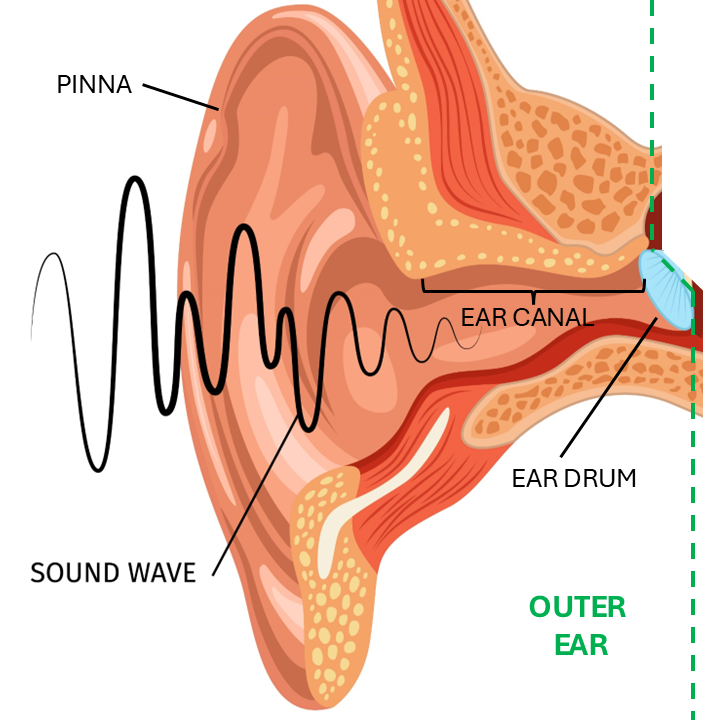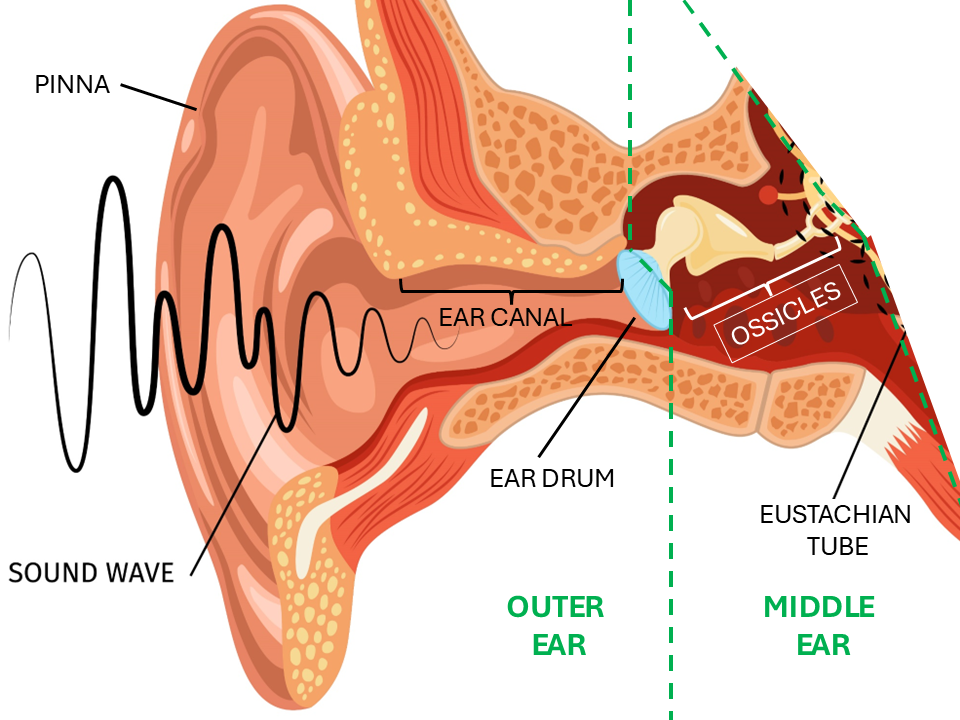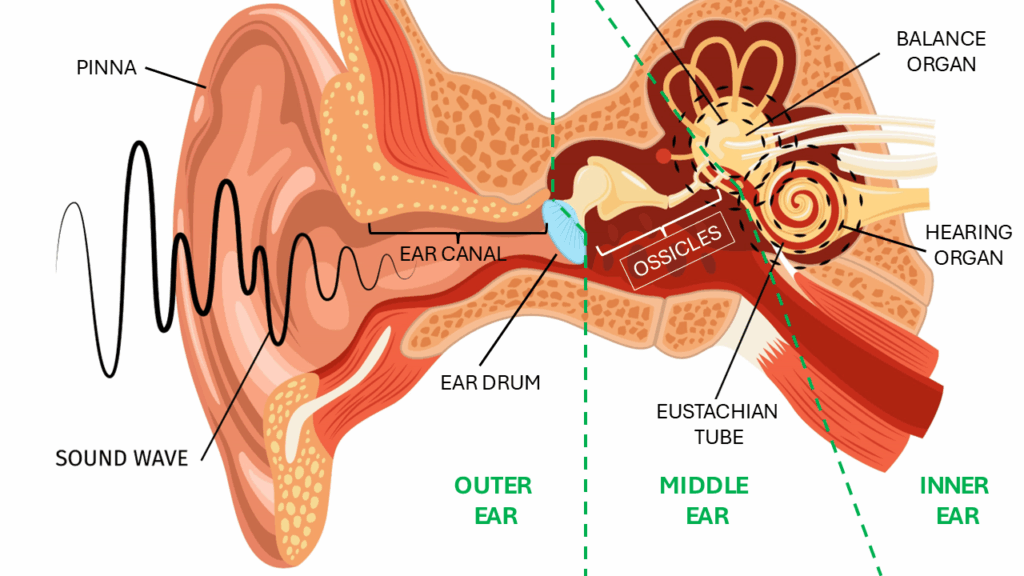Introduction
The human ear is an incredible and complex organ that not only allows us to perceive the world around through sound, but also allows us to connect with our loved ones. But have you ever stopped to think about how it actually works? From the visible outer ear to amazing middle ear and finally the intricate inner workings, the ear anatomy is an incredible marvel that’s worth exploring and understanding.
In this article, The Hearing Room will bring you through the different parts of the ear and discover the amazing ways they work together to bring us the sounds we love and need.
The Outer Ear: The Sound Catcher
The outer ear, also known as the pinna or auricle, is the visible part of the ear that collects sound waves just like a funnel and directs them into the ear canal. An interesting tidbit is that the human ear is able to distinguish the subtle time differences (milliseconds!) that a sound reaches each ear, and that allows us to tell the direction the sound is emitted from.
The ear canal, also known as the external auditory meatus, is lined with tiny hairs and produces cerumen, or earwax, which helps to protect the ear from dirt and bacteria. We will talk more about earwax and why it is good for the ears, but sometimes it causes issues in our next article!
The ear canal is slightly curvy and has two bends, and in ends at the eardrum, or the tympanic membrane. The eardrum is definitely one of the superstars of the ear! This thin, delicate membrane (about 0.1 mm thick – thinner than a human hair!) vibrates to the beat of sound waves, much like a drum does and transmits sounds into the middle ear. Fun fact: despite its delicate nature, it can repair and clean itself!

The Middle Ear: The Sound Transmitter
The eardrum separates the ear canal from the middle ear which is an air-filled space. The middle ear is also responsible for the “blocked” sensation when there’s atmospheric pressure changes, such as going up the lift or in a plane! The “blocked” sensation is actually caused by the difference in pressure between the ear canal (atmosphere) and the middle ear air space. Naturally, we know how to get rid of the sensation by swallowing or pinching our nose and blowing. This is actually due to the opening of the Eustachian tube that connects from the middle ear to the nasopharynx above our throat, and allows the pressure to equilibrize.
The middle ear also contains the three tiniest bones of the human body called the ossicles (the malleus, incus, and stapes). This chain of bones will receive the sound vibrations from the eardrum, and then amplify and transmit the sound waves to the inner ear.

The Inner Ear: The Sound Converter
The inner ear, or cochlea, is a complex structure that converts sound vibrations into electrical signals that are sent to the brain via the auditory nerves. It consists of the hearing organ called the cochlea, responsible for hearing, and the balance organ called the vestibular system, which helps with balance and equilibrium.
The cochlea is snail-like organ and is lined with thousands of tiny hair cells that detect sound vibrations. Interesting fact: The cochlea is like a piano with the hair cells at different areas tuned to different frequencies, allowing us to detect a wide range of sounds! If the cochlea were unrolled, it would be about 35 mm long, and these “strings” would be arranged in a precise order, with high-frequency sounds detected at the base and low-frequency sounds at the apex.

How It All Works Together
When sound waves enter the outer ear, they travel through the ear canal and bounce on the eardrum, causing it to vibrate. These vibrations are transmitted through the ossicles to the inner ear, where they’re converted into electrical signals. The brain then interprets these signals as sound, allowing us to hear the world around us. See the video below for more information!
At The Hearing Room Singapore, we love to talk about ears and hear all about them!
Now that you know more about the amazing ear anatomy from us, it’s time to take care of your own ears! Regular hearing tests can help detect any potential problems early on. At The Hearing Room, our expert hearing care professional and audiologists are dedicated to helping you protect and preserve your hearing. We are all ears about what you have to tell us so come have a chat with us today!


 The Hearing Room
The Hearing Room